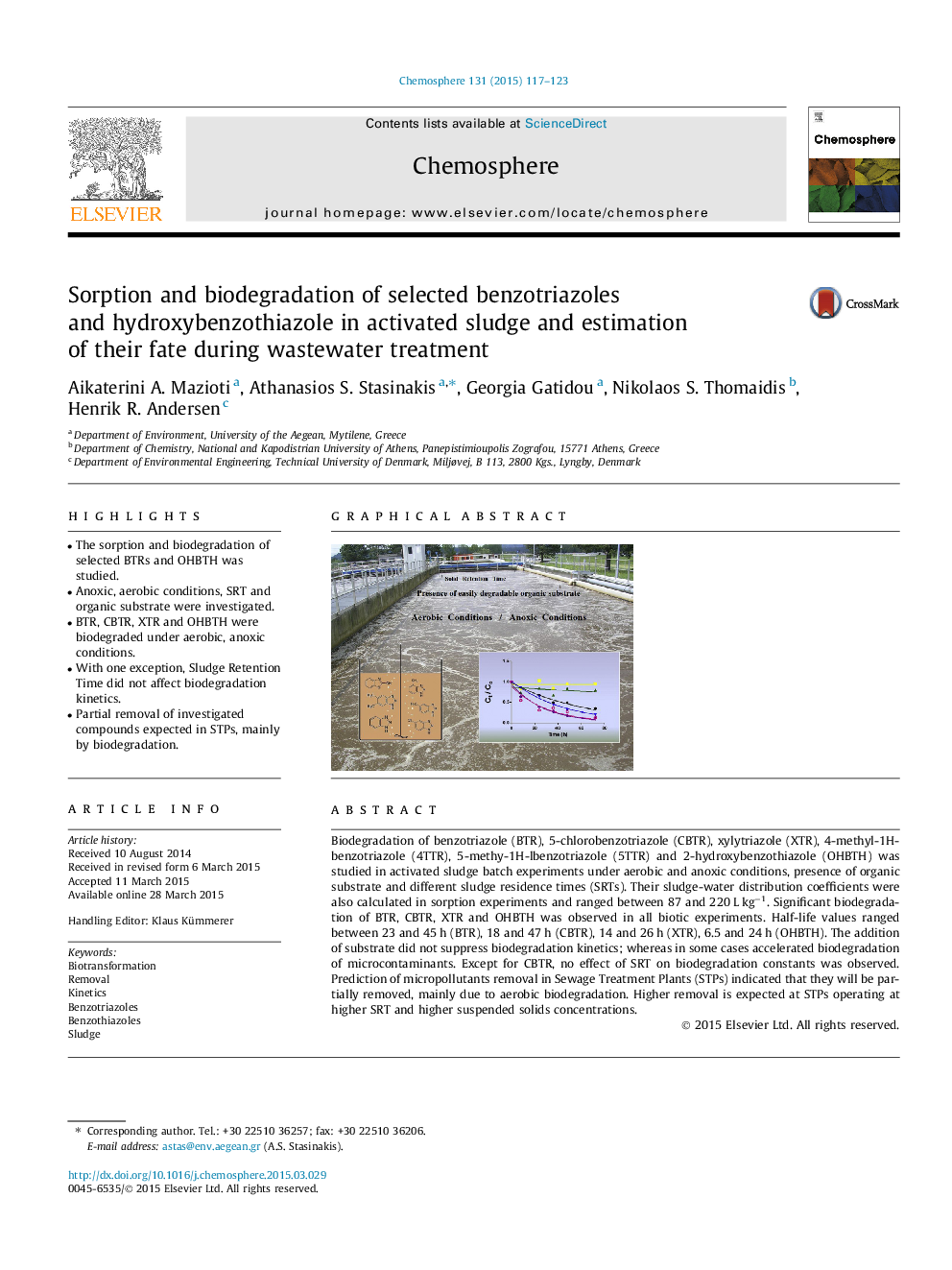| Article ID | Journal | Published Year | Pages | File Type |
|---|---|---|---|---|
| 6308010 | Chemosphere | 2015 | 7 Pages |
â¢The sorption and biodegradation of selected BTRs and OHBTH was studied.â¢Anoxic, aerobic conditions, SRT and organic substrate were investigated.â¢BTR, CBTR, XTR and OHBTH were biodegraded under aerobic, anoxic conditions.â¢With one exception, Sludge Retention Time did not affect biodegradation kinetics.â¢Partial removal of investigated compounds expected in STPs, mainly by biodegradation.
Biodegradation of benzotriazole (BTR), 5-chlorobenzotriazole (CBTR), xylytriazole (XTR), 4-methyl-1H-benzotriazole (4TTR), 5-methy-1H-lbenzotriazole (5TTR) and 2-hydroxybenzothiazole (OHBTH) was studied in activated sludge batch experiments under aerobic and anoxic conditions, presence of organic substrate and different sludge residence times (SRTs). Their sludge-water distribution coefficients were also calculated in sorption experiments and ranged between 87 and 220Â LÂ kgâ1. Significant biodegradation of BTR, CBTR, XTR and OHBTH was observed in all biotic experiments. Half-life values ranged between 23 and 45Â h (BTR), 18 and 47Â h (CBTR), 14 and 26Â h (XTR), 6.5 and 24Â h (OHBTH). The addition of substrate did not suppress biodegradation kinetics; whereas in some cases accelerated biodegradation of microcontaminants. Except for CBTR, no effect of SRT on biodegradation constants was observed. Prediction of micropollutants removal in Sewage Treatment Plants (STPs) indicated that they will be partially removed, mainly due to aerobic biodegradation. Higher removal is expected at STPs operating at higher SRT and higher suspended solids concentrations.
Graphical abstractDownload full-size image
